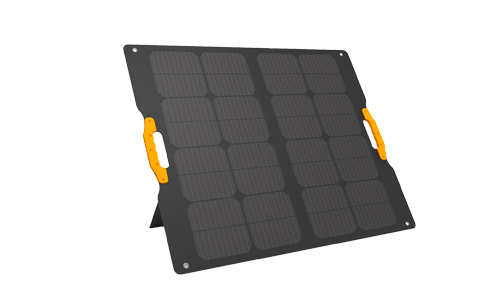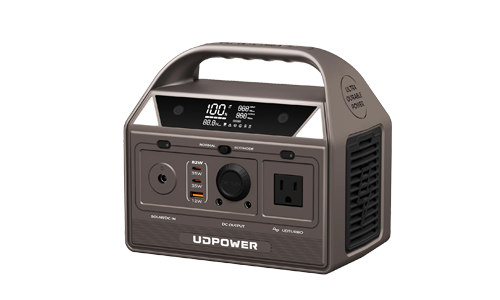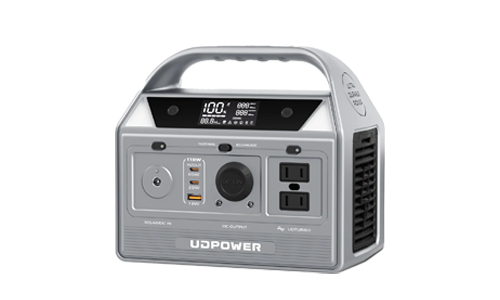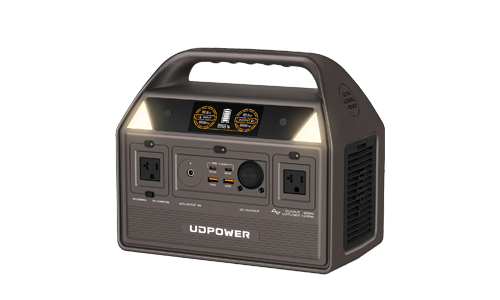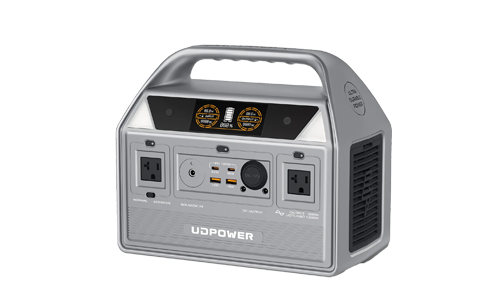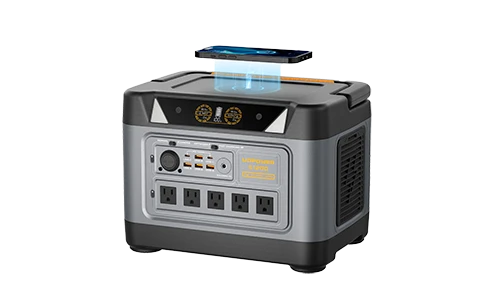How Many Watts Does a Window AC Use?
ZacharyWilliam1) Why Window AC Watts Matter
Knowing how many watts your window air conditioner uses helps you:
- Estimate electricity costs accurately
- Check circuit and breaker limits to prevent trips
- Size a backup power source (battery, solar generator, or gasoline inverter generator) for outages

2) Watts, BTU & EER—Quick Basics
- BTU (British Thermal Units): Cooling capacity per hour (e.g., 8,000 BTU).
- EER (Energy Efficiency Ratio): Cooling output (BTU/h) ÷ Power input (W).
- Watts are the electrical power the unit consumes.
Core formula: Watts ≈ BTU ÷ EER
Modern “inverter” window ACs can draw lower average watts due to variable-speed compressors.
3) How to Find Your AC’s Wattage
A) Read the nameplate or EnergyGuide label
Look for Watts directly. If missing, you’ll usually find Amps (A) and Volts (V).
Electrical formula: Watts = Volts × Amps (household circuits are typically 120 V in North America).
B) Check the manual or manufacturer website
Search for your model number to find the rated input, EER/CEER, and sometimes a typical running watt range.
Note: The label value is usually a rated draw; actual usage varies as the compressor cycles.
4) Average Watts by BTU Size (Data Table)
Use the table below as a planning reference. We compute watts as BTU ÷ EER for three common EER scenarios:
| Window AC Size (BTU) | Watts @ EER 8 | Watts @ EER 10 | Watts @ EER 12 |
|---|---|---|---|
| 5,000 | ~625 W | ~500 W | ~417 W |
| 6,000 | ~750 W | ~600 W | ~500 W |
| 8,000 | ~1,000 W | ~800 W | ~667 W |
| 10,000 | ~1,250 W | ~1,000 W | ~833 W |
| 12,000 | ~1,500 W | ~1,200 W | ~1,000 W |
| 15,000 | ~1,875 W | ~1,500 W | ~1,250 W |
| 18,000 | ~2,250 W | ~1,800 W | ~1,500 W |
These are estimated running watts. Choose the column closest to your unit’s EER/CEER.
5) What Changes Real-World Power Draw
- EER/CEER rating: Higher = fewer watts for the same BTU.
- Thermostat setting: Lower setpoints increase runtime and average watts.
- Ambient temperature & humidity: Hotter, more humid conditions increase load.
- Room characteristics: Size, insulation, sun exposure, air leaks.
- Maintenance: Clean filters and coils reduce power draw.
- Technology: Inverter/variable-speed models often have lower surge and lower average draw.
6) Running vs. Starting (Surge) Watts
Compressor motors draw more power at startup (inrush). A conservative planning rule is:
Starting Watts ≈ 2× to 3× Running Watts
| Approx. Size (BTU) * | Running Watts (EER 10) | Estimated Starting Surge (2×–3×) |
|---|---|---|
| 5,000 | ~500 W | ~1,000–1,500 W |
| 6,000 | ~600 W | ~1,200–1,800 W |
| 8,000 | ~800 W | ~1,600–2,400 W |
| 10,000 | ~1,000 W | ~2,000–3,000 W |
| 12,000 | ~1,200 W | ~2,400–3,600 W |
| 15,000 | ~1,500 W | ~3,000–4,500 W |
| 18,000 | ~1,800 W | ~3,600–5,400 W |
*For inverter window ACs, surge can be much lower because the compressor ramps up gradually.
7) Energy Cost: Daily & Monthly
Use this formula:
Cost = (Watts ÷ 1000) × Hours per day × Electricity rate
Example below uses an 8,000 BTU unit at EER 10 (~800 W) with three common electricity rates.
| Hours per Day | kWh per Day | Cost @ $0.15/kWh (Day / Month) | Cost @ $0.20/kWh (Day / Month) | Cost @ $0.30/kWh (Day / Month) |
|---|---|---|---|---|
| 4 | 3.2 | $0.48 / $14.40 | $0.64 / $19.20 | $0.96 / $28.80 |
| 8 | 6.4 | $0.96 / $28.80 | $1.28 / $38.40 | $1.92 / $57.60 |
| 12 | 9.6 | $1.44 / $43.20 | $1.92 / $57.60 | $2.88 / $86.40 |
Your actual cost depends on local tariffs and how often the compressor cycles.
8) How to Evaluate a Suitable Backup Power Source
Step-by-step sizing
- Find running watts from your label or by BTU ÷ EER.
- Estimate surge (starting) watts: plan for 2–3× running unless you have an inverter AC.
-
Match inverter/generator ratings:
- Continuous (rated) output ≥ 125% of running watts (buffer for fans, controls, and hot days).
- Peak/surge ≥ your AC’s estimated starting watts.
- Decide runtime (e.g., 2–8 hours) and choose a battery capacity accordingly.
-
Prioritize safety:
- Gas generators must run outdoors with proper ventilation and carbon-monoxide detection.
- Use heavy-duty, properly rated extension cords; avoid overloading a 15 A circuit (≈1,800 W @ 120 V).
Recommended power & battery sizing (rule-of-thumb)
| Running Watts | ~BTU (EER 10) | Min Inverter Continuous | Min Surge Capability | Suggested Inverter Generator (Continuous) | Battery Wh for ~2 h runtime* |
|---|---|---|---|---|---|
| 500 W | 5,000 BTU | ≥ 650 W | ≥ 1,250 W | ~1,000 W | ~700 Wh |
| 800 W | 8,000 BTU | ≥ 1,000 W | ≥ 2,000 W | ~1,600 W | ~1,130 Wh |
| 1,200 W | 12,000 BTU | ≥ 1,500 W | ≥ 3,000 W | ~2,400 W | ~1,700 Wh |
| 1,500 W | 15,000 BTU | ≥ 1,900 W | ≥ 3,750 W | ~3,000 W | ~2,120 Wh |
*Battery Wh assumes ~60% duty cycle and ~85% inverter efficiency. Real runtime varies.
Battery runtime expectations
| Battery Capacity (Wh) | 500 W AC | 800 W AC | 1,200 W AC |
|---|---|---|---|
| 500 Wh | ~1.42 h | ~0.89 h | ~0.59 h |
| 1,000 Wh | ~2.83 h | ~1.77 h | ~1.18 h |
| 2,000 Wh | ~5.67 h | ~3.54 h | ~2.36 h |
| 3,000 Wh | ~8.50 h | ~5.31 h | ~3.54 h |
• If available, set your unit to “Eco” or “Energy Saver” mode.
• Pre-cool the room before an outage if you know one’s coming.
• For conventional (non-inverter) models, a soft-start device can lower startup surge (availability varies for window units).
• Consider staggering loads—don’t start the microwave or fridge at the exact moment the AC’s compressor kicks on.
Need quick unit conversions (W ↔ A, mAh ↔ Wh, etc.)? Try a battery & power conversion tool.
9) Energy-Saving Tips for Window ACs
- Clean or replace filters monthly during peak use; keep coils dust-free.
- Seal gaps around the unit; use curtains/shades on sun-exposed windows.
- Set temperature sensibly (e.g., 76–78°F / 24–26°C) and use timers.
- Run a fan to improve airflow so the compressor cycles less.
- Upgrade to a higher-EER or inverter window AC when practical.
10) Methodology & Assumptions
- Estimated running power is computed as BTU ÷ EER for EER values 8, 10, and 12.
- Starting (surge) watts are approximated at 2–3× running watts for traditional compressor ACs; inverter models may be lower.
- Battery runtimes assume ~60% duty cycle (compressor not running 100% of the time) and ~85% inverter efficiency.
- Tables are planning references. Always confirm your unit’s nameplate ratings and consult a qualified electrician for critical loads.
11) FAQs
Can a 1,000 W power station run a 5,000 BTU window AC?
Often yes, if the AC’s running draw is around 500 W and the power station can supply at least 1,200–1,500 W surge. Runtime will be limited by battery capacity (see runtime table for estimates).
Can a window AC run on a 15 A household circuit?
Most smaller units can. A 15 A, 120 V circuit offers up to ~1,800 W. Avoid running multiple heavy appliances on the same circuit while the AC is on to prevent tripping the breaker.
Is CEER the same as EER?
CEER (Combined Energy Efficiency Ratio) includes standby/off mode consumption and is now used on newer EnergyGuide labels. For wattage estimates, use BTU ÷ CEER.
What’s the average watt usage for a 5,000 BTU window AC?
Typically 450–500 W running power at EER 10, with a startup surge of around 1,000–1,500 W for non-inverter models.
How do I calculate my AC’s running watts?
Check the nameplate for volts and amps, then use the formula: Watts = Volts × Amps. Or divide the BTU rating by the EER/CEER value.
Do inverter window ACs use fewer watts?
Yes. Inverter technology allows the compressor to ramp up and down, lowering average wattage and reducing surge during startup.
How much does it cost to run a window AC daily?
Example: An 8,000 BTU unit at 800 W for 8 hours/day at $0.20/kWh costs about $1.28/day (~$38.40/month). Use the formula: (Watts ÷ 1000) × Hours × Rate.
Can a portable power station run a window AC all night?
Only if the battery is large enough. For example, a 1,500 Wh battery running a 500 W AC continuously would last about 3 hours. You may get longer runtime if the compressor cycles off periodically.
Do higher EER ratings really save money?
Yes. Higher EER means fewer watts for the same cooling. Over a season, a jump from EER 8 to EER 12 could save 30–40% on cooling energy costs.
What’s the difference between running watts and surge watts?
Running watts are the steady draw when the AC is operating. Surge watts occur briefly when the compressor starts and can be 2–3× higher for traditional ACs.
How can I reduce my window AC’s power consumption?
Keep filters and coils clean, seal gaps around the unit, use curtains to block direct sunlight, set temperature sensibly, and upgrade to an inverter model when possible.
12) Final Thoughts
Window AC wattage depends mainly on size (BTU) and efficiency (EER/CEER). Use the tables and formulas above to estimate your unit’s running and starting watts, project energy costs, and right-size a backup power option. Planning with a small safety margin (for heat waves and other loads) ensures smoother operation—whether you’re optimizing bills or preparing for outages.
